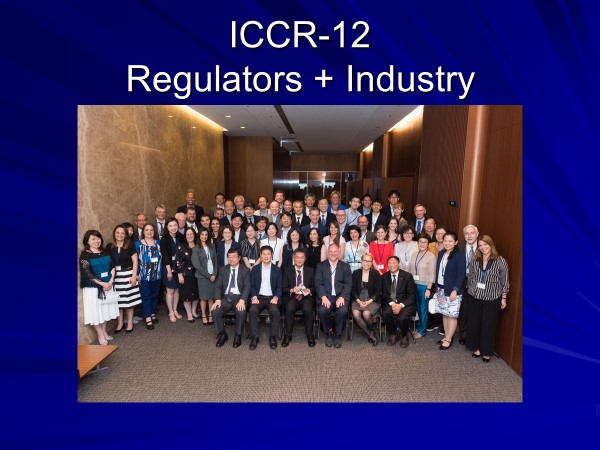PART THREE
FOLLOW THE YELLOW BRICK ROAD: FINAL STEPS (FDA AND ICCR)
Other milestones as I attempted to “Follow the Yellow Brick Road” had to wait until I left the Andrew Jergens Co. (now KaoBrands, Inc.) in 1991 to join the Division of Colors and Cosmetics (DCCS) at the U.S. Food and Drug Administration, Center for Food Safety and Applied Nutrition, later reorganized as the Office of Cosmetics and Colors (OCAC) in late 1992. FDA was at that time seeking means to do predictive structure-based “gap-filling” for incomplete or missing safety assessment data necessary to assure “adequate safety substantiation” of certain cosmetic ingredients and color additives. Our initial research in this area involved a “beta test” of several acute and sub-chronic preclinical toxicity and environmental toxicity endpoint modules of a QSAR-related software package based on the statistical “discriminant analysis” tool (TOPKAT®, Health Designs Inc.).
(see, S.R. Milstein, J.J. Yourick, R.L. Bronaugh, W.G. Wamer, D. K. Lowther, M.B. Meyers, and A.L. Scher, and S.J. Bell, SOT Annual Meeting, March 1998 (Washington, DC). . J.C. Dearden, et.al., “ECVAM Workshop 24-Expert Systems”, ATLA 25, 223-252 (1997).
Although the Office of Cosmetics and Colors (OCAC) did not elect to pursue further work with TOPKAT ®, another CFSAN Program Office (Office of Food Additive Safety, OFAS) did, employing this software, along with other more-sophisticated “in silico” software and database shared with FDA-CDER, procured by academia CRADAs, inter-agency agreements (IAG), and other extramural CRO contractual agreements, to “gap-fill” available experimental toxicology and environmental data being submitted by stakeholders for premarket notification submissions of “indirect food additives” (later, “secondary food additives”) under a new Congressionally-mandated “Food Contact Substance Notification (FCSN)” Program.
Concurrently, OCAC was able to refer TOPKAT® to the Cosmetic Industry’s self-regulatory cosmetic ingredient safety assessment peer-evaluation group, the “Cosmetic Ingredient Review (CIR)”, and the CIR Scientific Staff and Expert Panel made considerable use of this software in their safety assessments for a number of years (as well as other even more sophisticated “in-silico” predictive toxicology tools, as these, in turn, were developed, validated, and came on-line).
 From 2011, et. seq., we have been more successful in re-engaging FDA-OCAC interest in the QSAR Paradigm, hiring a very talented and skilled QSAR “subject matter expert” (Dr. Rajeshwar P. Verma) as an ORISE and Staff Fellow from my former postdoctoral host at Pomona College, who has in the last several years developed at FDA extensive “read-across” databases and implemented several state-of-the-art predictive toxicology QSAR computer programs invaluable in the safety assessment of cosmetic ingredients and modeling of “acute skin and ocular toxicity” and “skin sensitization” phenomena involving cosmetic ingredients.
From 2011, et. seq., we have been more successful in re-engaging FDA-OCAC interest in the QSAR Paradigm, hiring a very talented and skilled QSAR “subject matter expert” (Dr. Rajeshwar P. Verma) as an ORISE and Staff Fellow from my former postdoctoral host at Pomona College, who has in the last several years developed at FDA extensive “read-across” databases and implemented several state-of-the-art predictive toxicology QSAR computer programs invaluable in the safety assessment of cosmetic ingredients and modeling of “acute skin and ocular toxicity” and “skin sensitization” phenomena involving cosmetic ingredients.
In 2011, continuing to “ Follow the Yellow Brick Road”, we implemented a key recommendation concerning the use of QSAR and “read-across” as “weight of evidence (WoE) tools in cosmetic safety assessments, outlined in an ICCR-5 (Paris, 2011) White Paper, “Principles of Cosmetic Safety Assessment” (see here), and succeeded in 2012 at the 6th Annual Conference of the “International Cooperation on Cosmetics Regulation (ICCR-6, Rockville, MD)” in collaborating with colleagues from the European Commission-Joint Research Center (EC-JRC) in presenting a “concept paper” to the regulators of the U.S., Japan, EU, and Canada, proposing to charter a new Regulator-Trade Association “joint working group (JWG) ”, “QSAR/ in-Silico Approaches”, whose “terms of reference” (ToR) opined that computer-based “predictive toxicology” approaches to cosmetic ingredient safety assessments should be used to supplement the validated “in-vitro” animal-alternative test methods (AATM) as an integral component of the “safety assessors’ toolkit” that had been endorsed by ICCR since the ICCR-2 chartered working group, “International Cooperation on Alternative Test Methods (ICATM)” WG in 2008 (see, Q. Chaudhry, et. al. “In-silico Approaches for the Safety Assessment of Cosmetic Ingredients”, ICCR-8 (2014) White Paper (see here).
The “QSAR/ in-Silico Approaches” WG had some major successes during the next three years, but In 2014, the “in-vitro” ICATM and the “QSAR/ in-silico” JWGs were reorganized following ICCR-9 (Brussels) as a single, new working group, the “Integrated Strategies for Safety Assessments of Cosmetic Ingredients (IS)” JWG, which has since that time sought to bring all of the 21st Century (TOX21) strategies of “in-vitro”, “in-chemico”, and “in-silico” technologies to bear in addressing issues related to the safety assessment of cosmetic ingredients of relevance to regulators and industry worldwide. The White Papers resulting as outcomes of the “QSAR/ in-Silico” and “Integrated Strategies” JWGs are posted at the ICCR Internet Website (see here). See also, M. Dent, et.al., “Principles Underpinning the Use of New Methodologies in the Risk Assessment of Cosmetic Ingredients”, Computational Toxicology, 7, 20-26 (2018).
COMING FULL CIRCLE
I’ve now done a “baton pass” to the next generation of cosmetic ingredient safety assessors, who will be increasingly skillful in integrating the principles of the QSAR Paradigm into “toolkit” of 21st Century approaches to cosmetic ingredient safety assessment. It’s been a challenging and enjoyable period of time, to be sure, but, most important, I’ve been appreciative of the modicum of success that I’ve had over the past 40 years (1978-2018) in introducing the QSAR Paradigm, whether for optimization of bioactive cosmetic raw materials and ingredient synthesis or for regulatory purposes as a component of the “gap-filling” information tools necessary to generate science-based “weight of evidence” (WoE) based cosmetic ingredient safety assessment “dossiers.